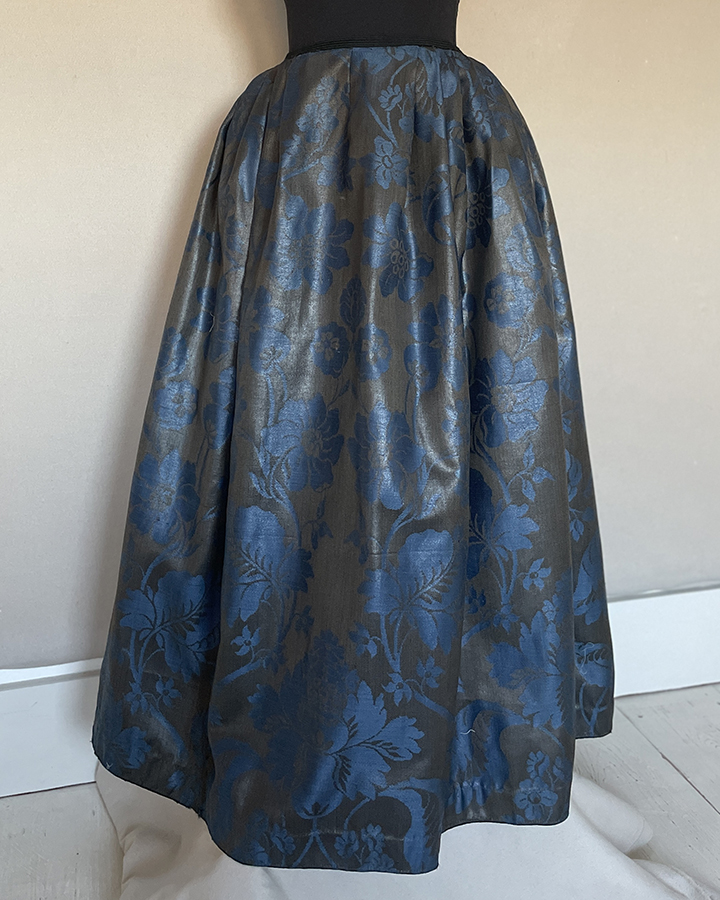






Glorious and stunning glaze, design and colour. There are 8 panels selvedge to selvedge in the skirt. The damask worsted fabric was known as spigeldamast or mirror damask and also as flowered satin. The glaze or calendering is like a mirror and was achieved by placing the completed fabric through heated cylinders. Calendering makes the fabric dirt resistant and therefore stronger. The term worsted refers to a type of high-quality fabric made from combed, long staple wool yarns that are lightly twisted prior to weaving and which produce a smooth shiny surface. In the eighteenth century, Norwich and Spitalfields were the main centers of worsted manufacture, with many master weavers settling from the Low Countries, and later the Huguenots. We know nothing about the Norwich designers.
In the book below* there is a man's morning gown, a Sjamberlouk made from a not dissimalar design to the skirt. I have sold three other skirts, one with a very similar design to the morning gown, all with huge repeats, often the height of the skirt. The book states that much woollen damask came from Norwich. Because of the clientele's conservative taste, the large floral and fruit motifs which had come into fashion in the second quarter of the 18th century were still being supplied at the end of that century, but our skirt is definately early 18th century.
You will notice, like the Chinese export silk damask skirt on the website, which was made in The Netherlands, both have the back pleats laying in one direction.
The mid blue on dark brown worsted fabric with a pattern repeat the full length of the skirt +, with huge flowers 9 in; 22 cm, smaller and leaves, all in lovely shade of mid blue and a dark brown ground, highly glazed, two panels have the calendering folds, the pocket opening and the hem edged with black narrow cording, unlined.
The skirt waistband of typical black ribbed wool tape with brass hooks and eyes fastening to the side. The front skirt with a flat panel, with 1/2 in; 1.5 cm wide pleating to the sides and back, a pocket slit below the fastening, the hem with fine black twisted cording.
The centre front has a 4 in; 10 cm seam. This was a tear, which has been repaired and then the waistband sewn on. There was not a waistband before.
The fabric would have been folded and pressed (see above) to achieve the high gloss finish. One can see the fold lines on two of the panels. Amazingly only one small hole to the back.
I also have a skirt made in The Netherlands, but of Chinese silk damask, with the same pleating style and cord trim.
*Aristocratic Attire Bianca M du Mortier. Rijksmuseum 2000. See fig 34.
See my article on Norwich Wool Textiles in the ARTICLES section of the website.
The Fabrics of Stuffs - Ursula Priestley
https://www.zuiderzeecollectie.nl/object/collect/Zuiderzee_museum-3134
Aangekleed gaat uit streekkleding en cultuur in Noord Holland ( regional clothing and culture in North Holland ) 1750 - 1900. pub Wanders, Zwolle, p 37
All images and text © meg-andrews.com 2021